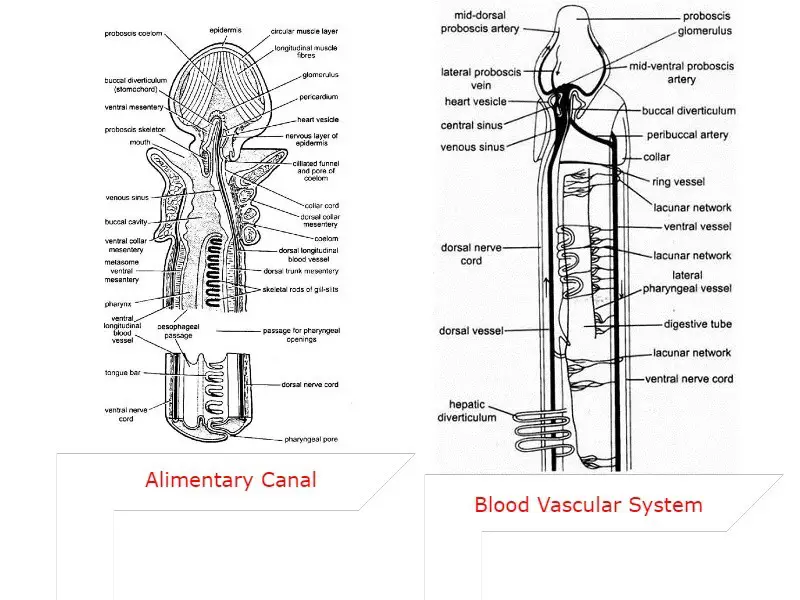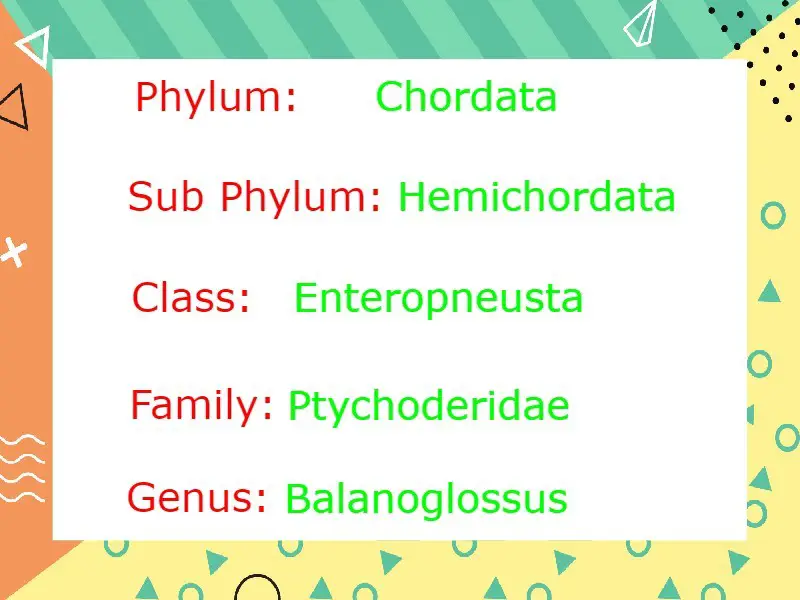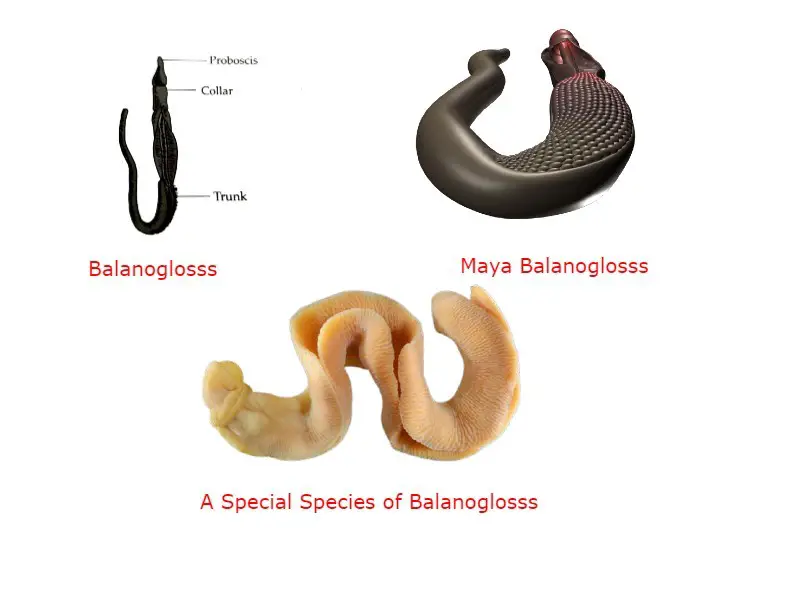Now we will discuss the excretory system, reproductive system, and nervous system, we will cover on following topics in this post –
- What is Primary Excretory Organ in Balanoglossus
- What is the mechanism of excretion in Balanoglossus
- The nature of excretory material in Balanoglossus
- General Overview of Nervous Systems in Balanoglossus
- Modes of Reproduction in Balanoglossus
Table of Contents
Excretory System of Balanoglossus:
In Balanoglossus excretory organ is the proboscis gland or glomerulus which is present in the anterior end of the central sinus and is present in the coelom of the proboscis. The glomerulus or proboscis gland is actually a projection of the peritoneum membrane which covers the central sinus, cardiac sac, and buccal diverticulum. Glomerulus glands look like a number of closed tubular structures and project towards the proboscis.
The excretory material present in the blood reaches up to proboscis gland through the central sinus. The proboscis gland separates the excretory material from the blood and the excretory material pass into the coelom of proboscis gland and from there the excretory material goes outside through the proboscis pore.

The excretory material is present as brown or yellow granules in the excretory peritoneal cells of proboscis gland. As Balanoglossus live in marine water so their excretory material directly mixes with water and the excretory material is not concentrated as much as the animals present in terrestrial habitat.
Nervous System of Balanoglossus:
In Balanoglossus nervous system makes its network in the body wall. In the below the epidermis and above the basement membrane nerve cells and nerve fibers make a network of nervous tissue and this nerve plexus is distributed throughout the body of Balanoglossus.
The nervous tissue is arranged throughout the body wall but they are present in higher concentrations along the mid-dorsal and mid-ventral lines and make two major nerve cords. The thickening of nervous tissue along the mid-dorsal line is known as the mid-dorsal nerve cord and the nerve tissue thickening along the mid-ventral line is known as the mid-ventral nerve cord.
The mid-dorsal nerve cord presents the entire length of the body up to the tip of the proboscis where it produces a nerve ring, anterior nerve ring. But the ventral nerve cord extends up to the collar-trunk septum at which it produces a nerve ring, circumcenter nerve ring.

The dorsal nerve cord runs through the mid-dorsal line of the body wall but when it reaches the collar-trunk septum it comes out of the body wall and enters into the coelom cavity which is known as the collar cord. The collar cord shows great resemblance with the central nervous system in the higher Chordate, it has some giant nerve cells which take part in the reflex action and have a cavity called neurocoel.
Sensory Organs in Balanoglossus:
Balanoglossus have some sensory nervous cells which makes them aware of the surrounding in which they live.
- In the proboscis region and in some portion of collar Balanoglossus have neurosensory cells which takes different types of stimuli, pressure, light from their surroundings.
- In ventral side a U shaped depression present near the collar-trunk septum which have large number of cilia, known as ciliary organ which test the chemical nature of the food comes through the water current.
Reproduction of Balanoglossus:
Reproduction in Balanoglossus can occur in different modes, it may occur through asexual reproduction or sexual reproduction but asexual reproduction is not common in Balanoglossus.
Sexual Reproduction in Balanoglossus:
Male and female are different in Balanoglossus but it is not clear from the outside, so sexual dimorphism is absent in Balanoglossus. The gonad is also similar in Balanoglossus, the primary male reproductive organ is the testis and the primary female reproductive organ in Balanoglossus is the ovary but they are similar. The only way to differentiate the male and female is the color of the mature gonad which is different in males and females.

The gonads are sac-like structures and present in multiple rows on the lateral side of the alimentary canal in the genital wings. Each gonad has ductules that open into the gill pores and from there the gametes go outside of the body.
Asexual Reproduction in Balanoglossus:
Asexual reproduction is very rare in Balanoglossus but in some species asexual reproduction is present. For example, Balanoglossus capensis is a species of Balanoglossus that cut its posterior tail part which gives rise to a new Balanoglossus.
Regeneration in Balanoglossus:
Regeneration is the most important way to multiplication in Balanoglossus, the body fragments of Balanoglossus can regenerate the whole body and form a new Balanoglossus.
Reference:
Detailed Information on
What is Balanoglossus: A Tongue Worm
External Morphology of Balanoglossus
Coelom and Coelomic Fluid in Balanoglossus
Digestive System of Balanoglossus
Hi Everyone!!! Welcome to Imaluop. Imaluop always try to learn some new and he want to share to other people. Here we will try to learn various topics on Science, specially on Biological Sciences.
